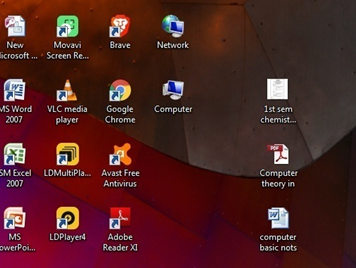Different Parts of Windows 7
Windows 7, a popular operating system developed by Microsoft, introduced a user-friendly interface and several innovative features. Understanding the different parts and components of Windows 7 is essential for efficient navigation and utilization of this operating system. In this article, we will explore various aspects of Windows 7, including icons, the Start button, date and time settings, the taskbar, and more.

Icons
Icons are graphical representations of files, folders, programs, and shortcuts in Windows 7. They provide a visual way to identify and access different items on your computer. You can customize and organize icons on your desktop for quick access to your most-used files and applications.

Start Button
The Start button, located in the lower-left corner of the screen, is a central element of the Windows 7 user interface. Clicking the Start button opens the Start Menu, where you can access various programs, files, and system settings. It serves as the gateway to your computer's functionality.

Date & Time Settings
Windows 7 allows you to customize date and time settings to ensure your computer's clock is accurate. You can set your time zone, change the date and time format, and even synchronize your computer's clock with an online time server for precise time keeping.
Taskbar & Toolbars
The taskbar is a prominent feature of the Windows 7 interface. It provides easy access to open programs and shows the date and time. You can also pin frequently used programs to the taskbar for quick launching. Toolbars, such as the Quick Launch toolbar, can be added to the taskbar for even more convenience.

Display Desktop (Show Desktop) or Start + D
Pressing the Windows key + D or clicking on the "Show Desktop" button on the right side of the taskbar minimizes all open windows and shows the desktop. This feature is handy when you want to access files or shortcuts on your desktop without closing or minimizing all open applications manually.
Notification Area (System Tray)
The notification area, also known as the system tray, is located on the right side of the taskbar. It displays icons for system and program notifications, such as network connectivity, volume control, and anti-virus status. You can customize which icons appear in the notification area.
Pin a Program to the Taskbar
To pin a program to the taskbar, right-click on the program's icon and select "Pin to Taskbar." This allows you to keep your frequently used programs readly accessible on the taskbar for quick launching.
Rearrange Buttons on the Taskbar
You can rearrange the buttons on the taskbar to suit your preferences. Simply click and drag a taskbar button to a new position to reorder your open programs.
How to Position the Taskbar
By default, the taskbar is positioned at the bottom of the screen, but you can move it to the top, left, or right sides of the screen if you prefer. Right-click on the taskbar, select "Properties," and under the "Taskbar location on screen" dropdown, choose your desired position.
Lock the Taskbar
To prevent accidental changes to the taskbar's position and size, you can lock it. Right-click on the taskbar, and in the context menu, check the "Lock the taskbar" option.
Understanding these different parts of Windows 7 can significantly enhance your computing experience. Whether you are customizing your desktop, managing your taskbar, or adjusting date and time settings, Windows 7 offers a range of features to make your work more efficient and enjoyable. Take full advantage of these components to get the most out of your Windows 7 experience.
Leave a comment